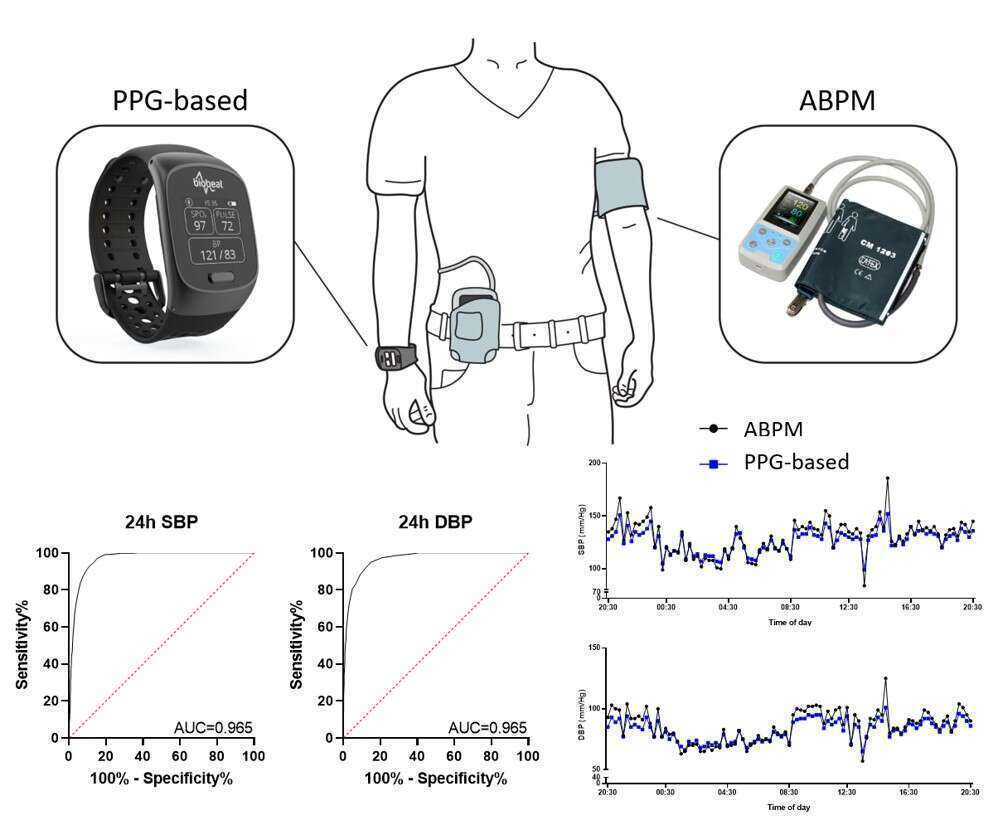
Assessment of 24-Hour Ambulatory Blood Pressure Monitoring using a Novel Non-Invasive, Cuff-Less and Wireless Device
2IRMM, Institute for Research in Military Medicine, Faculty of Medicine, The Hebrew University of Jerusalem and the Israel Defense Force Medical Corps, Israel
3Department of Epidemiology and Preventive Medicine, School of Public Health,, Sackler Faculty of Medicine and Sylvan Adams Sports Institute, Tel Aviv University, Tel Aviv, Israel, Israel
4Internal medicine wing, The Chaim Sheba Medical Center, Tel-Hashomer, Israel, Israel
5Biobeat, Biobeat Technologies LTD., Israel
Introduction
Ambulatory blood pressure monitoring (ABPM) using cuff-based devices is used for the diagnosis and treatment of hypertension. However, technical limitations, low compliance, and complex procedure limit their use. The aim of the present study was to compare a new simple technique of 24H ABPM using a photoplethysmography (PPG)-based, wearable device to the standard cuff-based device.
Materials and Methods
In this prospective study, 24H ABPM was performed in parallel using a standard cuff-based device (Holter) and the PPG-based device (Watch) on volunteers aged 18-65 years, while documenting their daily activities (Figure 1). The level of comfort and activity disturbance of both devices were recorded. Linear regression and Bland-Altman were used to evaluate the agreement between the Watch and Holter. Receiver Operating Characteristic (ROC) curve analysis was used to assess the ability of the Watch to identify abnormal BP values.
Results and Discussion
The study included 28 subjects (18 men) mean age 41.5±16.2 years. Bland-Altman analysis results in 24H bias of -1.1 mmHg for both diastolic blood pressure (DBP) and systolic blood pressure (SBP). Mean daytime bias was -1.9 mmHg for DBP and SBP, while nighttime bias was smaller (0.7 and 0.4 mmHg for DBP and SBP respectively). ROC curve analysis on all BP readings (n=2381) yielded a mean area under the curve (AUC) for 24 hours of 0.965 for both SBP and DBP. 24H ABPM with the Watch caused significantly less inconvenience compared to the Holter (p<0.001).
Conclusion
The cuff-less device provides comparable measurements to those obtained with the currently used ABPM device with significantly less inconvenience. Moreover, this device offers a longer period of continuous monitoring, potentially enabling better adjustment of treatment of hypertensive individuals.

Powered by Eventact EMS